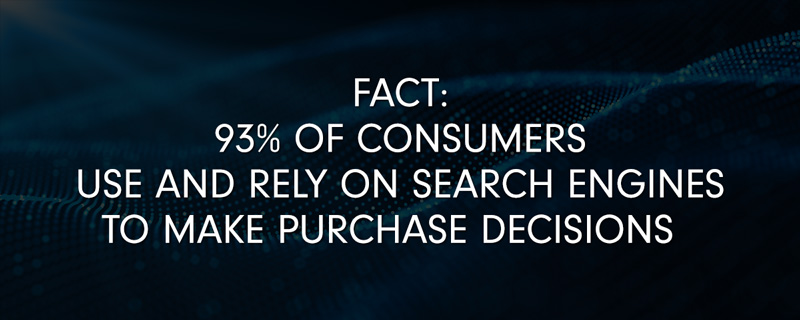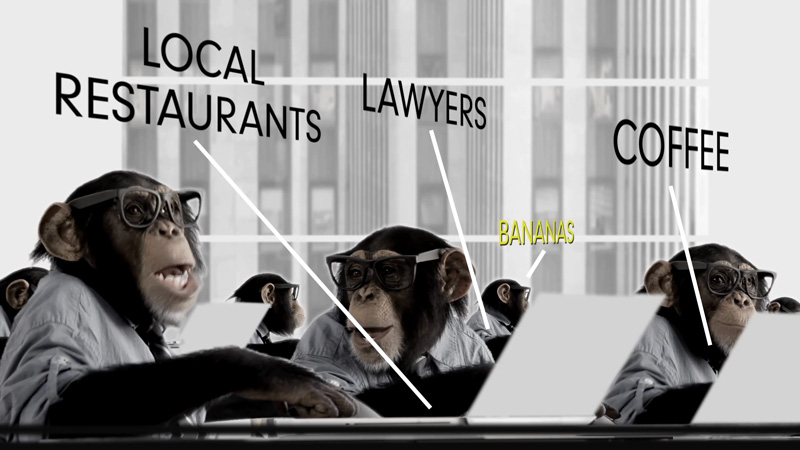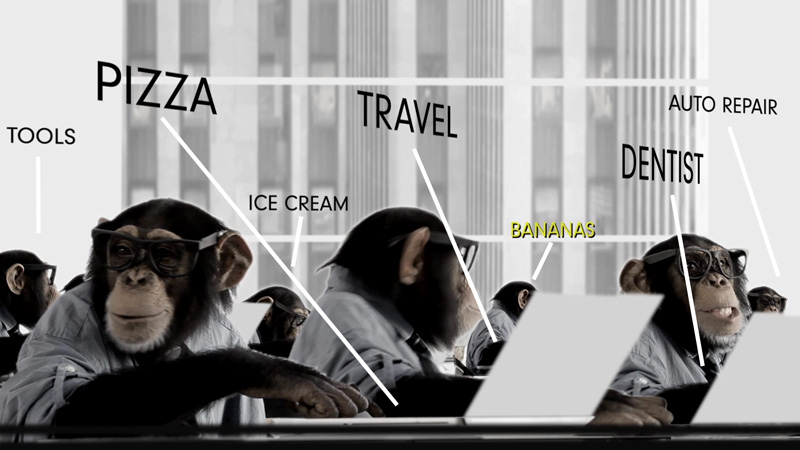Google keeps improving the way it ranks websites. As Google gets smarter and more powerful at understanding users’ search intent, it keeps updating its algorithms, which in turn requires corresponding adjustments to established SEO practices.
- How to Find the Right Web Design Company
- Virtual Offices An Easy Solution To COVID-19 Mandatory Home Isolation
In a dynamically changing web environment like this, getting noticed can be extremely challenging. This, however, doesn’t mean you should lose hope. No matter how competitive search engine rankings are, you can’t miss the opportunity to target 93% of the consumers who use and rely on search engines to make purchase decisions.
Want to know how well your website is performing?
Get a free analysis from our Web Geeks experts
One of the best ways to make an impression and attract consumers is to focus on SEO. As a website owner and marketer, if you’re wondering how SEO drives web traffic and how SEO experts in Windsor can help you, you’ve come to the right place.
In this guide, we’ll discuss how the latest SEO tactics drive traffic to web sites and generate conversions.
Working on Technical SEO
No matter how much effort you put in to drive web traffic, your site will continue to underperform on search engines if it’s not technically sound. Here are the most important areas of technical SEO that you need to focus on:
Switching to Secure Connections
You need to make sure your site loads on HTTPS. Some websites load on HTTP and others on HTTPS. The additional ‘S’ stands for ‘secure’.
Since 2014, site security has been a critical ranking factor on Google because it wants to protect its users from malicious parties trying to exploit them in any way. Google now warns users visiting non-HTTPS sites.

Want Help?
Get a free one-on-one consultation with our experts
Enabling AMP
Another technical SEO strategy that helps drive web traffic entails enabling Accelerated Mobile Pages (AMP) for mobile devices. According to Statistica, as of the fourth quarter of 2019, Google had the highest share of organic mobile search traffic (61%). Given the high volume of searches from mobile devices, Google now prioritizes websites optimized for mobile devices when ranking them for search queries. It has already begun rolling out the mobile-first index, confirming that mobile-optimized sites will be prioritized in search results. A great strategy to benefit from this change is to enable AMP.
AMP is a Google-backed initiative to help publishers develop responsive and mobile-optimized content. These pages are served from the Google AMP cache and can seamlessly render content on smartphones and tablets. Apart from serving from the AMP apache, AMP combines HTML tags, which facilitates quick rendering of common web patterns, with the AMP JS, which is a library focused on best practices and resource loading for fast rendering. All these components combine to drive more mobile web traffic to your site.
Using a Crawling Software Solution
Moving on, if you want to get notices, view your website from Google’s perspective. This can be done with the help of a crawling software program, which behaves like a Google crawler to give you insights into the technical capabilities of your site. There are a number of crawling applications to choose from.
Want Help?
Get a free one-on-one consultation with our experts
One of the most popular options includes Botify, a cloud-based crawler used by companies like eBay and Expedia. Closest to Google’s own secret algorithms, Botify is among the strongest crawlers out there. The program will not only tell you whether Google has crawled your page or not, but it will also issue advice on how to restructure site maps and web content to optimize your webpage for the search engine.
If Botify is beyond your budget, Sitebulb should be a good alternative. Even though it’s a relatively new player on the market, the crawler has managed to secure multiple awards up till now. What’s different and valuable about this crawler is that it will quickly identify and explain the technical issues on your site in simple words. Once you obtain those insights, you know exactly what to do to fix the problems.
Want to know how well your website is performing?
Get a free analysis from our Web Geeks experts
Correcting Semantic Markups
In addition, correcting the semantic markups on your site also helps improve its SEO performance and attract web traffic. Semantic markups are HTML tags that help Google understand your site by emphasizing key information on your webpages. In other words, they explain to crawlers what a page is about without requiring it to digest every word.
To clarify things, let’s take the example of heading tags. Text wrapped in the tag represents the page’s main title, briefly conveying what the rest of the content on the page is about. Whereas, the text wrapped in the tag denotes sub-headings, and so on. Fixing these should help Google spiders better understand your webpages and, subsequently, rank them higher.
Hence, working on the above-discussed areas of technical SEO should make a huge difference to your site’s SEO performance. For technical SEO, you need the help of experts. Whether you’re searching for professionals experienced in SEO in Burlington or SEO in Waterloo or SEO in Windsor, Web Geeks can help you out.

Implementing Other On-page SEO Techniques
Using Short, Descriptive URLs
A great URL will immediately tell Google and its users what a webpage is about. For instance, take a look at this URL: https://www.healthline.com/nutrition/how-to-gain-weight. Just by looking at it, you can tell that the webpage must provide some tips to gain weight. Now check this URL: https://www.medicalnewstoday.com/articles/322345.php. No one can tell what this article might be about.
Descriptive URLs not only assist Google crawlers in understanding sites but they also appeal to users. Since descriptive URLs tend to include your targeted keywords, they are more likely to match the search queries of users, who are encouraged to click on your page.
Furthermore, try to keep the URLs as short as possible. A long URL is truncated in search results, diminishing its clarity to the users. Users should be able to see the entire descriptive URL when they search on Google.
Want Help?
Get a free one-on-one consultation with our experts
Using Original Images
If you use stock images, it might be hurting your site’s SEO performance. The impact of stock images on Google rankings has been tested by Shai Aharony, the founder of Reboot Digital Marketing. He created a number of brand new websites using fresh domains that were never used before and used original images on some of them and generic stock images on others. The results showed that sites with original photos clearly outranked those with used stock images.
Besides, you want to give every image on your website a descriptive alt-text and filename, too, because it helps Google understand what those images are depicting, giving further clues on what the webpages are about. Also, optimize one of the images for your targeted keyword. All you need to do is include the keyword in the filename of that image as well as in the image alt-tags.
In other words, using original images on your site and optimizing them for SEO improves your search engine ranking, attracting more traffic and thus, sales.
Boosting Page Speed
If your landing pages take ages to load, chances are visitors will hit the back button and click on a different search result. According to Think with Google, as the page load time for a site rises from 1 to 3 seconds, the chances of bounce increases by 32%. Another research found that 53% of mobile users leave a webpage that takes more than 3 seconds to load. That’s the proportion of web traffic you could be losing with a slow loading website.
The underlying reason is that slow page-load speed represents a bad user experience. When a user has a poor experience with your site, they will never return to your site, even if you somehow manage to rank first on Google.
Plus, Google is intelligent enough to know when people leave a site because of being annoyed by slow-loading pages, so your site ranking can drop. In other words, page-load speed, especially on mobile devices, is a critical ranking factor.
To avoid this, you must take immediate steps to boost page-load times. But how do you do this? Start by assessing your webpages through Google’s PageSpeed Insights tool. It will not only analyze your webpages but also suggest ways to improve the loading speed. Based on an analysis of 5.2 million websites by Backlinko, you can boost your loading speed simply by moving to a faster host, reducing your page’s total size, and removing as many third-party scripts as possible.
To improve your page speed, you can also rely on experts that have experience in SEO in Burlington or SEO in Windsor. For instance, Web Geeks has everything it takes to set up perfect on-page SEO.
Want to know how well your website is performing?
Get a free analysis from our Web Geeks experts
Writing Comprehensively on Topics With High Search Traffic Potential
Long-form Content Pieces
Google prefers content-rich websites. According to studies, long-form content pieces dominate the first page of search engine rankings. Based on a SerpIQ study, the length of the top 10 results for a search query was more than 2,000 words, with the 2,416-word post ranking first and the 2,032-word post ranking 10th.
One explanation for why longer content ranks high on Google is that it accumulates or earns more backlinks, which translates into higher search engine rankings and more web traffic. Short, limited content fails to provide enough value to potential customers and link creators in your industry. On the other hand, long-form posts tend to be more comprehensive, providing more value to users.
Since Google knows that users want everything in one place, it realizes that long-form content is more likely to provide answers to user’s queries, ranking them higher. Backlinks are generated when link creators in your industry find value in your content and believe that it could be useful for their audience too.

Choosing Topics with High Traffic Potential
However, writing at length on topics with low search traffic potential won’t produce the results you’re looking for. You need to be writing on topics your target audience is searching for. This is where keyword selection comes into play. Your content topics should be optimized for high- volume, low-competition keywords.
To find such keywords, log in to Ahrefs Keywords Explorer and enter relevant phrases and click search. Once you select a keywords ideas report, you’ll be presented with hundreds of thousands of keyword ideas. Filter this list by search volume and keyword difficulty.
Search volume refers to the number of times a keyword is searched for on Google from a particular country. Set this filter at a minimum of 1,000 so that you see keywords that can potentially send traffic.
Keyword difficulty, on the other hand, refers to the ranking difficulty of a keyword, represented by a number from 0 to 100. Set this filter to a maximum of 10 to see keywords that aren’t too competitive.
Want to know how well your website is performing?
Get a free analysis from our Web Geeks experts
As you hit the search button, you’ll see a list of topics with a decent number of searches. Try to write on one of those topics. If you are struggling to find good keywords, then you can reach out to SEO experts in Windsor. They can help you find relevant topics and keywords to rank for.
However, don’t just rely on keyword search. Make sure that the topics you choose also offer high business value. These are topics discussing problems that can be easily solved by the product or service you offer.
There’s no point in driving a lot of traffic to your page if it offers no business value. In short, when you are choosing topics for your content, make sure it has high traffic potential, high business value, and low competition.

Final Word
By now you should have gained an in-depth idea about how SEO drives web traffic and boosts sales. If you’re a growing business in Burlington or Windsor looking to rank on Google, chances are you’re searching for experts who have experience in SEO in Burlington and SEO in Windsor. Wherever you’re located, Web Geeks can help you transform and optimize your website so that you can rank higher on Google and get noticed. To learn more about how we improve on-page, off-page, and technical SEO, schedule a free consultation today.
Want Help?
Get a free one-on-one consultation with our experts
